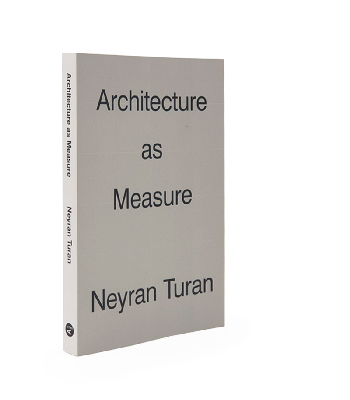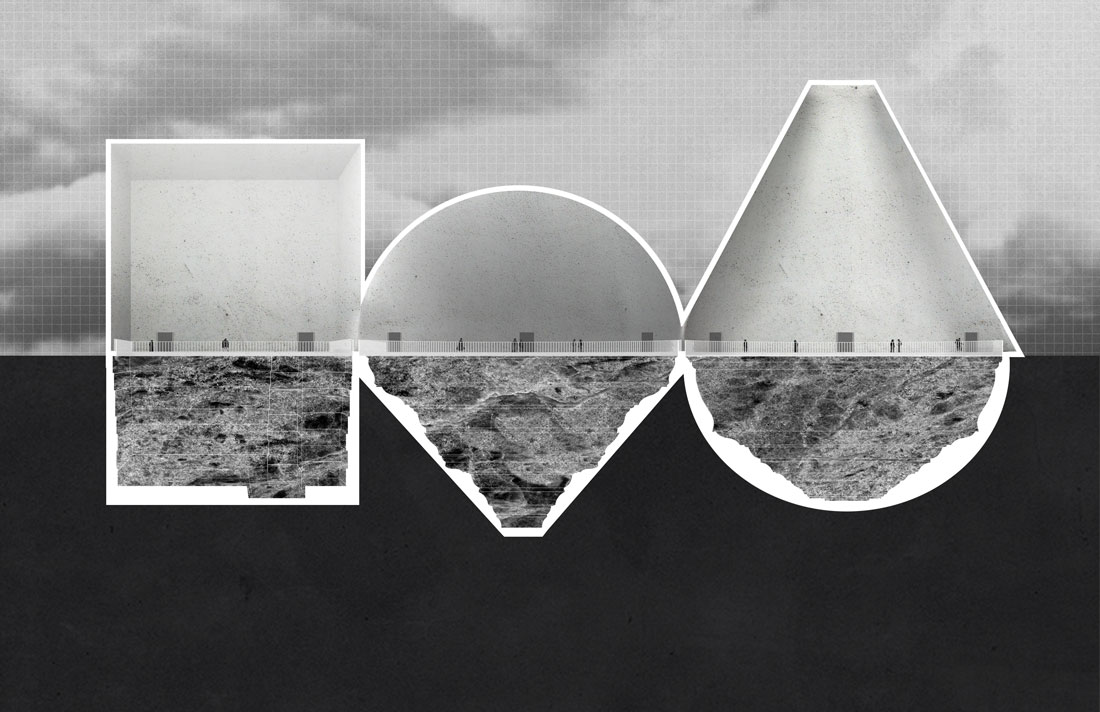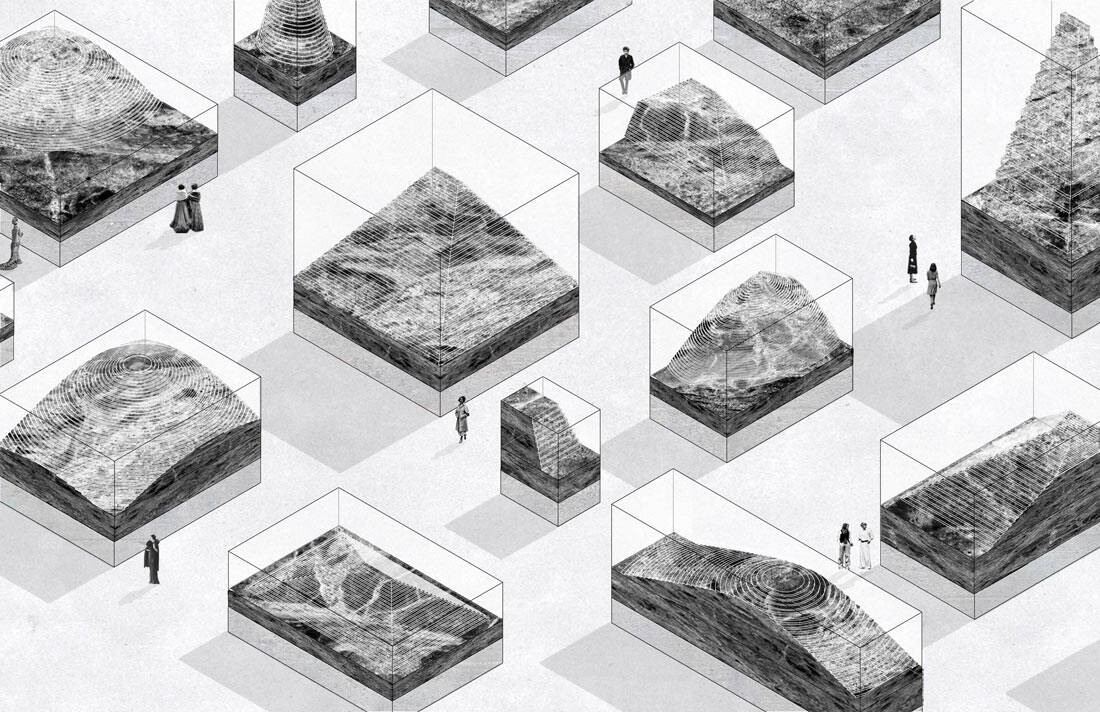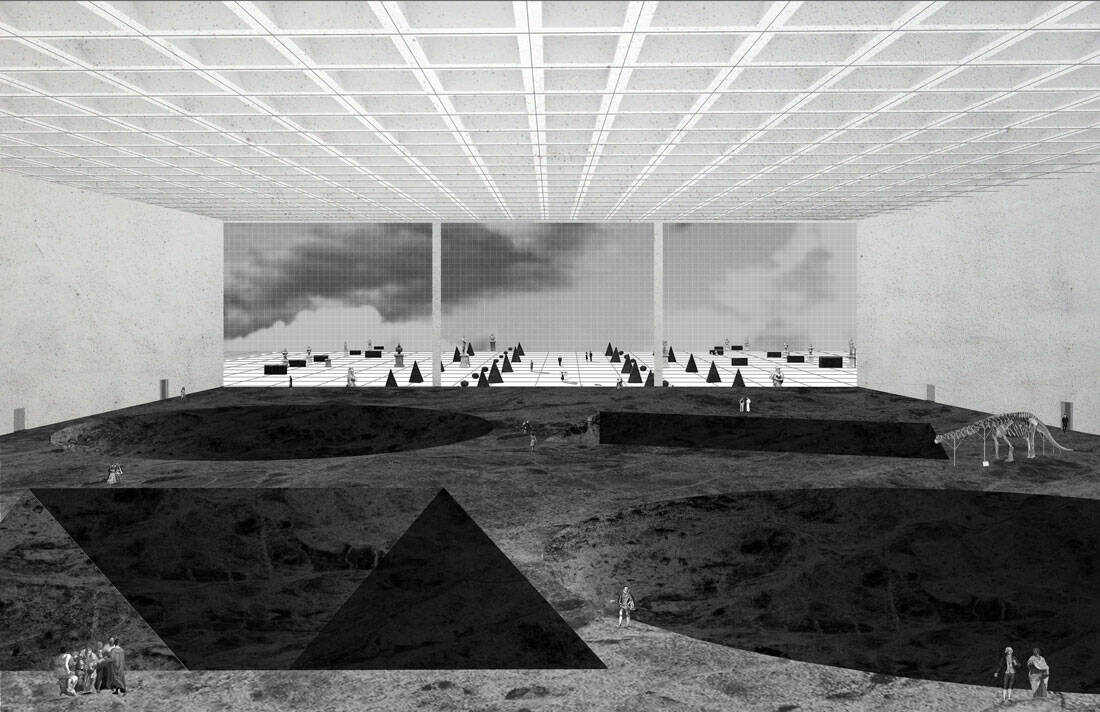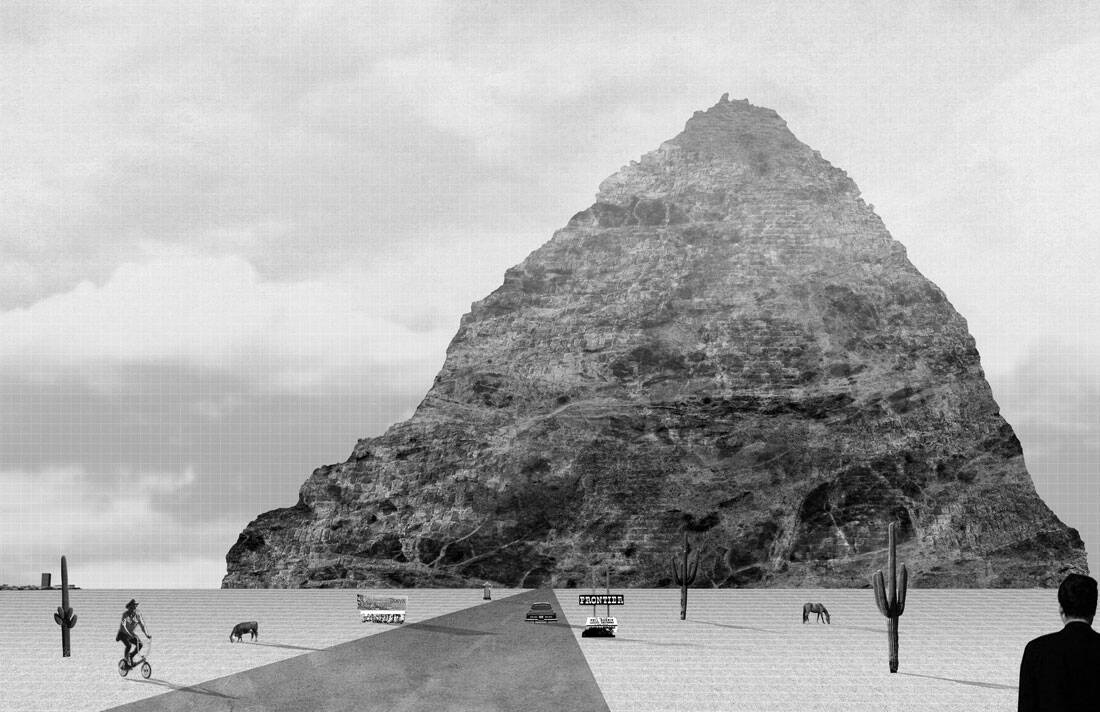The city gives the illusion that earth does not exist.
—Robert Smithson, “Sedimentation of the Mind” (1968)Resource-making activities are funda-mentally matters of territorialization—the expression of social power in a geographical form.
—Gavin Bridge “Resource Geographies” (2010)
After Nature
In the concluding section of his 1864 book, Man and Nature; Or, Physical Geography as Modified by Human Action, American diplomat, historian and conservationist George Perkins Marsh writes: “It is a legal maxim that ‘the law … [does not concern] itself with trifles,’ … but in the vocabulary of nature, little and great are terms of comparison only; she knows no trifles, and her laws are as inflexible in dealing with an atom as with a continent or a planet.” He goes on to say that “every new fact, illustrative of the action and reaction between humanity and the material world around it, is another step toward the determination of the great question, whether man is of nature or above her.”[1]
One response to Marsh’s “great question” might hold that, if nature as we know it is altogether a new phenomenon in light of the Anthropocene, as I have discussed in the introductory chapter, then our ways of relating to nature reside clearly beyond a question of being “of or above” it. Considered to be one of the earliest thinkers about the human impact on nature, or what we now term anthropogenic climate change, Marsh was keen on incorporating natural history into our understanding of human history, echoing the interests of natural historians like Alexander von Humboldt and others who came before him.[2] For Marsh, this kind of integration was essential to moving beyond the inadequacy of human standards of spatial and temporal dimension when understanding natural processes. According to Marsh, human standards were too narrow to assess the vastness of the natural expanses of time and space, due to the limits of our comprehension.[3]
At the same time, these standards were also naïve in terms of understanding the power of the small scale; they failed to recognize the possibility that something that seems trivial could be as significant as the big picture when assessing natural phenomena.
Museum of Lost Volumes, 2015. Rare Earth Cenotaph.
These points resonate with the arguments advanced by contemporary historians such as Dipesh Chakrabarty, who contends that, in the era of the Anthropocene, natural history and human history should be seen as part of the same geohistory rather than considered as separate.[4] Whereas both thinkers emphasize the incapacity of human understanding to comprehend this geohistory, Marsh’s and Chakrabarty’s assessments differ noticeably in relation to what constitutes the small scale. For Marsh, size is an attribute of spatial measure: an atom is small, whereas a planet is big. For Chakrabarty, who takes his cues from geology, the question of scale in relation to human cognition of planetary systems is relative and more temporally based: compared to the arc of geological time, the life span of a human (100 years) constitutes less than a blink in the fossil record. Chakrabarty asks, “What does it mean to dwell, to be political, to pursue justice when we live out the everyday with the awareness that what seems to be ‘slow’ in human and world-historical terms may indeed be ‘instantaneous’ on the scale of Earth history, that living in the Anthropocene means inhabiting these two presents at the same time?”[5] Chakrabarty argues that the Anthropocene disrupts our quotidian sense of inherent certitude by “bringing the geological to the everyday.”[6]
This last point is particularly important, as I have previously acknowledged in the introductory chapter the need to collapse the categories of the planetary (unfamiliar) and the quotidian (architectural, familiar). If the geological is already integrated into our everyday lives by the Anthropocene, and if climate change requires us to create new connections between “larger scales of scientific representation” and “smaller scales of meaning,”[7] as science and technology studies professor Sheila Jasanoff warns us, then can architecture act as a measure in which the simultaneity of the planetary and the quotidian are read together? Considering important encounters within architectural history in which architecture’s imagination of its “origins” coincided with the discovery of a new kind of natural history in the past—what historian Martin Rudwick calls a “geohistory,” a new knowledge of the long history of the natural world’s own formation, its geology—how might we talk about such an encounter now between architecture and the Anthropocene, or of an after nature?[8]
One example of such an entanglement between architecture and after nature would be our under-conceptualized geographic (spatial/horizontal) as well as geologic (volumetric/sectional) footprint in the context of contemporary urbanism. Think of geographies of various industrial activities such as sites of resource extraction and transportation (mining areas, offshore drilling sites, oil pipeline routes), agriculture, logistics, and waste. These “wasteland” geographies lie outside of both ecology’s focus on the “natural” and wilderness landscapes and urbanism’s focus on the city. However, they play a central role in the production and conception of what is known to us as our contemporary built environment.[9] From environmental historian William Cronon’s work that problematizes the notion of wilderness and brings forward the interplay between technology and the environment (and thus city and the hinterland); to geographer Neil Brenner’s concept of “planetary urbanization” that argues for the dissolution of the hinterland and the disappearance of nature (rendering the concepts of the rural and the natural systems obsolete due to the supply chains and logistics infrastructure of industrial capitalism); to other geographers such as Stuart Elden and Gavin Bridge’s calls to conceptualize the idea of territory as volumetric or sectional instead of merely a horizontal entity, it is critical to conceptualize our planetary wasteland as neither human nor natural, but as one quotidian aspect of a larger geohistory.[10]
Moreover, it is impossible to interpret nature as either merely a social construction or a solely material entity, as it is multidimensional in its relation to both. Instead of resorting to dichotomies of nature vs. culture, human vs. nonhuman, urban vs. wilderness, how can we further articulate the spatial framing and myriad dispositions of these landscapes for architecture and urbanism? If the original conception of wasteland is already imbricated into our very understanding of beauty, sublimity and nature—as shown by architectural historian Vittoria Di Palma—then what kind of an architectural aesthetic imagination reflects the geologic and geographic understanding of our planetary wasteland in spatial and temporal terms?[11]
Wonder Room of rare earth species.
Consider mining geographies as one such planetary wasteland. According to estimates, currently, between 47 and 59 billion tons of material is mined every year—which is more than ten times as much material as is contained in glaciers.[12] But, because of their invisibility, we do not usually consider these kinds of resource geographies as part of our urban milieu.[13] Take, for example, Baiyun-Obo, a mining town located in northern China which has the largest deposit of rare-earth metals and was responsible for 45 percent of global rare earth metal production in 2005. Or, the “lithium triangle,” located in the salt flats of Uyuni in Bolivia, Atacama in Chile and Hombre Muerto in Argentina, which was accountable for 70 percent of the world’s exploitable reserves of lithium in 2008.
Rare earth minerals are a set of seventeen chemical elements that are currently exclusive commodities, especially during the transition from the extraction of fossil fuels to the development of sustainable or “green” technologies. They are used extensively in consumer electronics and within the military. Solar panels, wind farms, laptops, cell phones, electric vehicles, fluorescent lighting, and most green technologies depend on the use of these metals. In addition to the actual space of the rare-earth metal mines themselves, if one considers their processing infrastructures, access roads and connections to highways, water storage tanks, administrative areas, etc., these landscapes may be invisible and unfamiliar but are a fundamental part of our familiar everyday urban lives. Beyond naively optimistic overtones or apocalyptic narratives, how can architectural imagination and representation bring critical issues such as resource extraction, in this case mining, to disciplinary and public consciousness?
Another Geohistory
The Museum of Lost Volumes project takes this theoretical prompt as a starting point. As a geo-architectural fiction and a satiric commentary on resource extraction, it provides an alternative focus on the mining of rare earth minerals. Built after the depletion of rare earth minerals due to their abundant use in “green technologies,” the museum speculates on the preservation of geologic ruins that once were used for the resource extraction of rare earth minerals.
As places of knowledge and inventories of nature, natural history museums played a vital role in the nineteenth century for the emergence of the idea of geohistory, a new form of consciousness of the long and complex history of the earth.[14] Likewise, the Museum of Lost Volumes imagines ways in which future generations would assess our current geohistorical transition, in which our human impact on the earth’s history is part of the geological record. It is a post-natural museum of the Anthropocene.
Grand Hall of Platonic volumes.
Since rare earth minerals are the backbone substances that are used in “clean-energy” technologies such as wind turbines, electric batteries and solar panels, the project questions the idea of resource scarcity in the abundance of “green technologies.” It imagines a museum of ancient resource-extraction ruins that exists in a time when mining is an obsolete practice and is treated like an ancient monument or an extinct species to be housed in a natural history museum. If geologic scale does not “conform to the limited powers of our intelligence,” as stated by the nineteenth-century naturalist Comte de Buffon, Museum of Lost Volumes renders the temporal and spatial attributes of the geologic as a tangible entity through the limits and potentials of design thinking.[15] The project comprises five drawings, which all depict specific aspects of this imaginary natural history museum.
While projecting on an unknown future era, Museum of Lost Volumes is slightly unfamiliar. In an attempt to expand the limits of the architectural discipline’s imaginary, it employs familiar architectural strategies in what is an unfamiliar realm within a disciplinary setting—in this case, mining—and brings it into architectural and public consciousness. Instead of using data mapping or visualization, it points to the ruthless territorial geometries of mining through the capacity of the architectural imagination by misusing familiar forms and techniques from architectural history to tell a different story. For instance, a geological section takes on the monumental and sublime qualities of eighteenth-century architect Étienne-Louis Boullée’s cenotaph, in order to showcase giant rare-earth mines, and thus becomes a place for the commemoration of mineral extraction.
The Grand Tour: Rare earth replicas.
The famous 1981 photograph of architectural historian Reyner Banham riding a bike in the American desert gains another relevance in the project as he is shown biking instead in the outdoor deserted—both wilderness and wasteland—landscape of the museum near the giant replica of a rare earth mine. Banham’s photograph was taken when he was crossing the Mojave desert while traveling from Los Angeles to Las Vegas, a trip during which he famously described himself as “culturally naked and ill-prepared” to understand the physical reality, the classification and the conceptual relevance of this deserted landscape.[16] Banham is probably equally clueless to the significance of the landscape in the Museum of Lost Volumes garden, but something else is definitely at stake.
Architect Robert Venturi’s renowned pose looking at the view while he was doing fieldwork for his and Denise Scott Brown’s Learning from Las Vegas research trip in 1968 has a new significance in the museum, as Venturi is shown observing the replica of the rare earth mine and contemplating its relevance for architectural history. Perhaps he ponders, “What should we learn from the rare earth monument?” And finally, the customary Grand Tour of archeological sites taken by architectural nobles of the seventeenth and eighteenth centuries is replaced with another kind of tour now, to the outdoor precinct of the Museum of Lost Volumes, this time to observe the ancient ruins and monuments of resource extraction replicas, of anthropogenic climate change.
While speculating on humans’ relationship to the earth, the Museum of Lost Volumes situates the idea of the slightly unfamiliar as an alternative positioning between the geologic and the aesthetic. Rather than understanding the environment as simply natural, as systemic, or as earth (as I discussed in the introductory chapter), the Museum of Lost Volumes manifests the environment as aesthetic and monumental. By juxtaposing issues of resource and matter with monumentality, it offers a renewed dialogue between the representational and the material.
